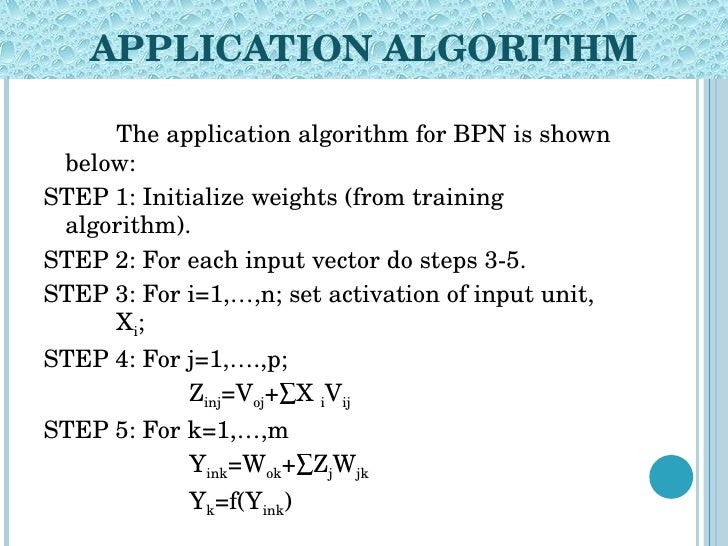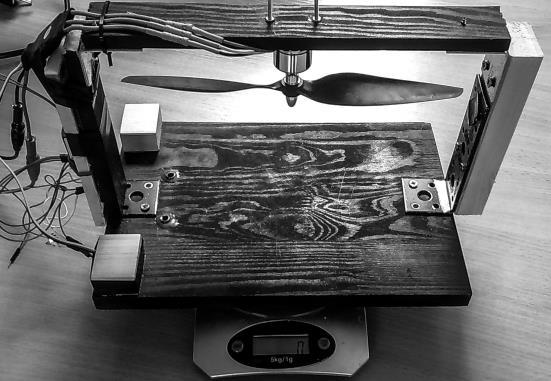Backpropagation Program Telewizyjny
Actually, I have developed a library that works with multithreading. I posted here the basics to show in the most simplistic way the algorithm. I hope I can post it here soon. But basically if you want to do it multithreading this is the way to do it: Take the layer in process and assign a group of neurons of the same layer to each thread: For example if you have 30 neurons and you are using 4 threads for processing: then you would assign 7 neurons per thread, and reassign to the first ending thread the two lasting neurons.
And leave waiting all threads that ended their process until the last finish. Once you have processed the current layer you move to the next one: Update the next layer inputs and make the same process as with the last layer: Assign neurons to process to each thread..until you reach the output layer. This actually takes all the power of your CPU and increases speed.
Thank you for the information sir, i have a question. I want to put more Network inputs and Network outputs(like 5 or 10 more) #define NETWORK_INPUTNEURONS 10 #define NETWORK_OUTPUT 10 but i dont know how can i display the result of the ouputs when they are more than 1 //display result cout. Sir basically I am control engineer. I want to develop expertise in the area of neurofuzzy control. I have background in fuzzy however i am new to neural networks. I just learned gradient descent rule and how it can adjust weights to reach the minima and a bit of back propagation algorithm.
- Envivo Usb Dj Controller Software - Examiner Fiat Download Serial Key - Program Telewizyjny Do Wydruku Dla - Citrix Ica Client Clean Uninstall Firefox - Canon Copier Pc 775 Manual - 2013 Schweser Kaplan Cfa Level 1 Qbank Download. Program Gallery; Proof Gallery; About. The algorithm to do so is called backpropagation. 20 thoughts on “ Neural Networks and the Backpropagation.
But the problem is that I read lot of stuff, all of them are trying to use mathematical language.I appreciate their effort but now I want to program for example a neural network which I can train with gradient descent for any thing let say to find the coefficients of a reference linear function.Please recommend me some book which can take me step wise by giving me the basic understanding of different networks, implementation in matlab and applications and so on and so forth. I dont have words for the contribution which you are doing in terms of imparting knowledge and helping students. Thank you, I just jumped into matlab and started to write my own code.At the moment I am just following my rough understanding what i read in the books in the following way for two inputs and single hidden layer. 1) two inputs x1 and x2 2) weights like w1.,w4 between inputs and layer 1. 3) output of two neuron in the hidden layer o1=sigmoid(x1w1+x2w3) o2=sigmoid(x2w4 + x1w2) 4) simillarly weights between the hidden layer and the output. And finally output neurons.
5) Finally i will calculate the error by the difference of desired and actual output. 6) finally i will try to implement the equation of the update rule for weights. 7) The only way i know is gradient descent. I will try that 8) But what is the difference between LMS,NLMS and gradient descent. I think all of them are doing the same thing.Please correct me. 9) Incase i found some problems i will come back to you.
That’s what I do there, multiply the input with neuron weights and then pass them to the sigmoid function. Zip File Extractor For Android Apk Download. If you set random weights each time you calculate the input layer then the training on that layer would be in bane, because you would be overwriting the weights of the input layer that have been trained. Please check the code and you’ll see weights are initialized as random when the network is created. Later those weights are adjusted by the training function. Function: layer::calculate() does exactly what you said. It multiplies the weights of the layer with the input of it and pass it to sigmoid function. Hi there, when you change the output or input size and you don’t get the result you want, you have to change some parameters of the network.


I tested the network with the default parameters and yes, it wasn’t converging. So I tested different neuron counts on the input layer and even added a hidden layer and came up with the solution. I basically added more neurons to the input layer to make a total of 6 and increased training iterations. NETWORK_INPUTNEURONS 6 EPOCHS 100000 I tried with different input neuron counts and 6 was the perfect solution. Even 5 was not converging.
Moreover I had to increase training epochs. Unfortunately, there is no formula to find out the perfect network configuration for a given problem. You have to test different configurations until you find the solution. Hi there, I have another question on the back-prop.
It is about calculating gradient from output layer to hidden layer. Would you refer this link? It is about equation (18). According to the equation (18), for each hidden neuron, the sum sign is summing all output neurons that are connected to one hidden neuron. Ps2 Genji Dawn Of The Samurai Isolation. According to your code, in the “train()” method, the variable “sum” is summing all connections between any two neurons between hidden layer and output layer.
Did I understand right? I would really appreciate if you could answer my questions. Hello, I tried your application and I have weird results when I add hidden layers for non linearly separable data. For example I have 150 patterns each with 2 values from range 0.1 and 3 outputs (0 or 1). I add one hidden layer which contains 3 neurons and almost all test fails. I tried write backpropagation algorithm myself based on this article and I got the same result.
I noticed that problem is with weights. In my case in first epoch they values are around 0.9. After 500 epochs weights values is around 190! This makes sum of weight*input really high and sigmoid function returns value close to 1. Could you give me some advice what can I do?